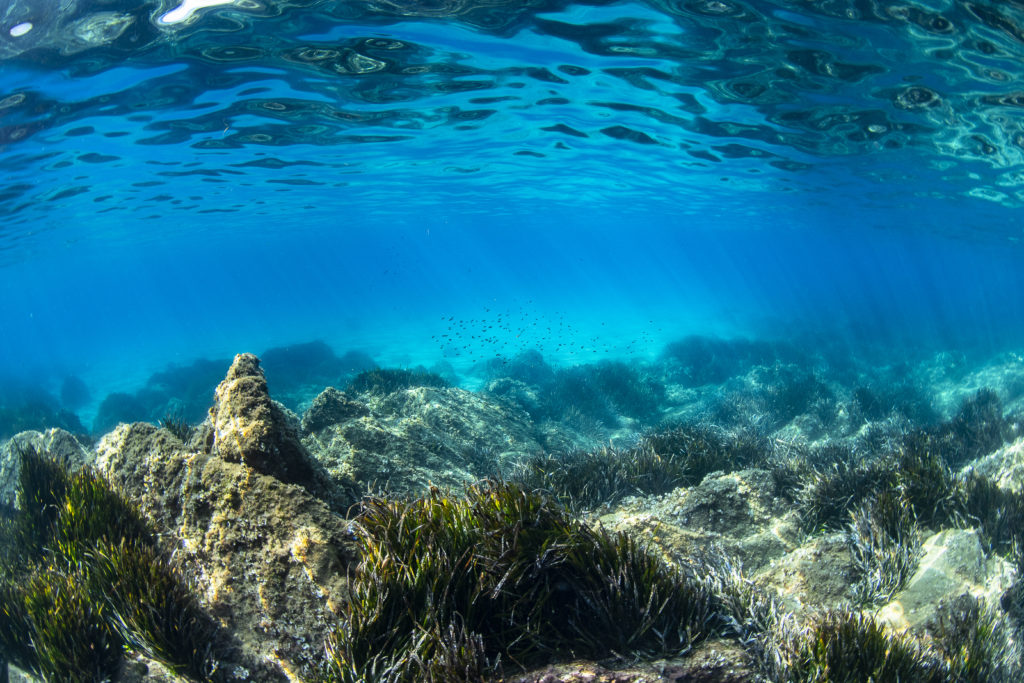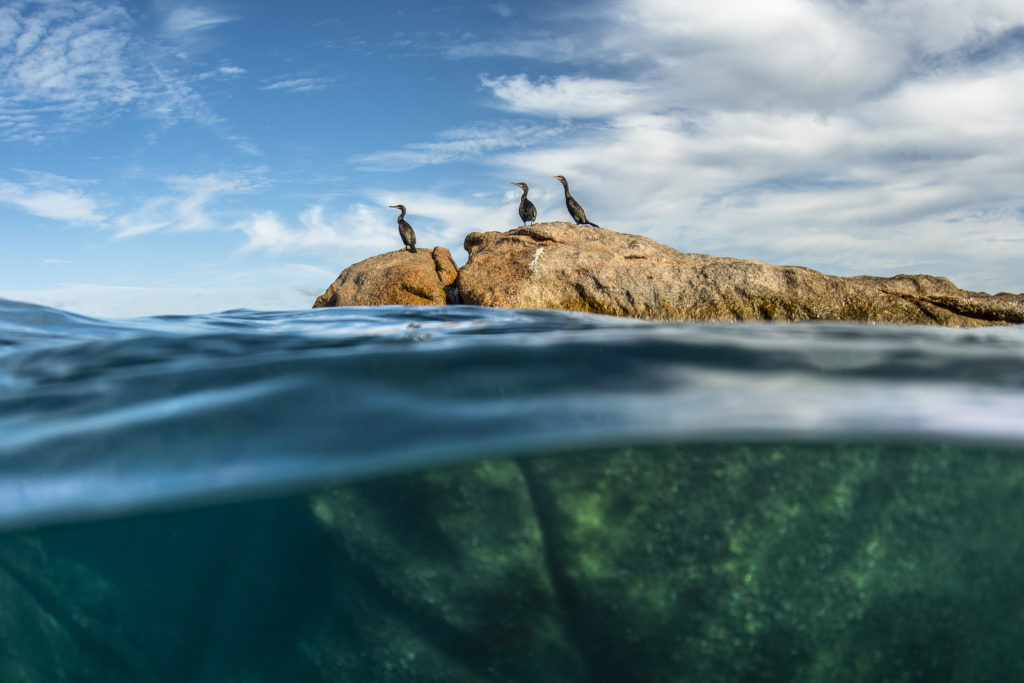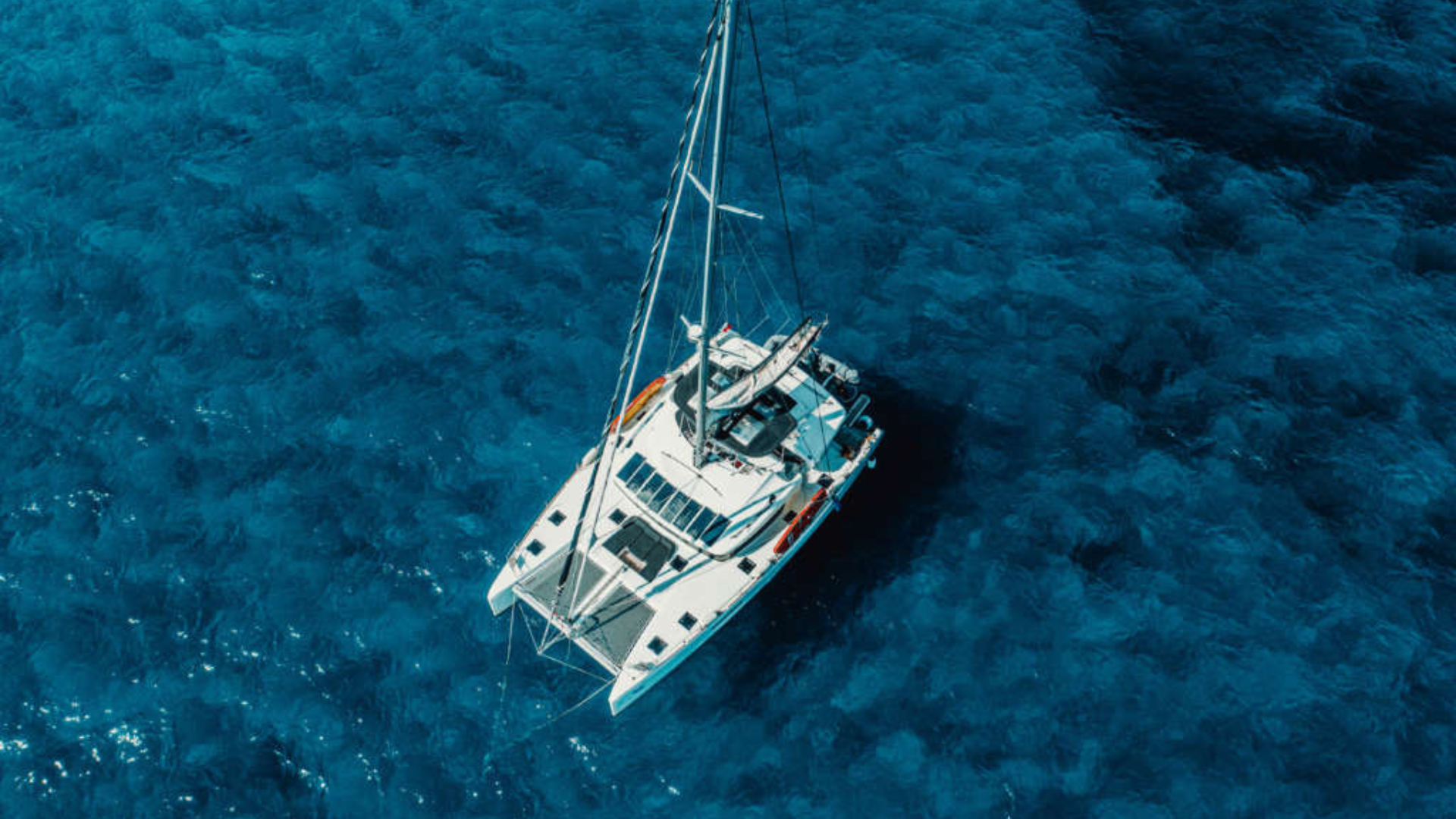Posidonia: a Mediterranean gem
Posidonia isn’t a paradise island from a James Cook novel. It is a marine flowering plant that can be found in the heart of crystal-clear water. It is considered as the lungs of the sea, just like the Amazon forest is the lungs of the Earth. To preserve it, it is important to learn about it and to respect it. This is why Marine Vela is committed to the planet and tells you why this seagrass is a true Mediterranean gem worth protecting.
Table of contents:
1. Posidonia oceanica seagrass: the lungs of the sea
It got its pretty name from Poseidon! Just like the Greek God, Posidonia seagrass is endemic to the Mediterranean Sea and reigns over it. This marine plant is full of life: it can survive for thousands of years! The Posidonia seagrass can be seen at the surface and as deep as 40 meters. It can be recognized thanks to:
- Long strips of green leaves that can be confused with seaweed ;
- Little flowers, a main part of its reproduction cycle. Researchers get excited whenever they spot a new flower. They usually bloom in the fall and turn into fruits in the winter. The current helps with pollination, just like the wind helps with pollination on land. Unfortunately, the Posidonia seagrass doesn’t bloom every year anymore.
- Plump fruits called “olives of the sea”, that float on the surface when ripe. Their thick skin helps them float, and they move with the currents, sprouting far away from their original plant.
The Posidonia oceanica seagrass is an underwater forest that needs sunlight to survive. Part of the photosynthesis is stored in the roots, and the other part helps with growing the leaves. It can even survive in the dead leaves found on beaches or in floating balls: they are called sea balls, and store carbon dioxide.
Now that you know how to recognize them, here is why the Posidonia seagrass from the Mediterranean are protected.

2. Posidonia seagrass, a Mediterranean gem worth protecting
The Posidonia plants are carbon sinks and marine biodiversity tanks.
2.1. A major role in biodiversity
Life is possible thanks to the Posidonia seagrass’ ecosystem services:
- A laying area and a nursery for shellfish, crustaceans, amphibians and fish ;
- Food for fish such as Sarpa salpa, commonly known as the dreamfish, which eats the leaves ;
- A place to rest for the fauna ;
- Piles of dead leaves which help reduce coastal erosion thanks to their hydrodynamic protection against currents and waves ;
- It sets the soil and purifies water thanks to its roots ;
- Finally, it produces oxygen through photosynthesis.
The Posidonia seagrass is the iconic habitat of the Mediterranean. It influences the cycle of life for marine species, whose entire existence depends on it. It plays a part in balancing the coasts and transmitting organic matter to other ecosystems. This is why the Posidonia seagrass is considered as one of the most precious marine ecosystems.
2.2. An endangered treasure
The Posidonia seagrass of the Mediterranean’s growth is very slow, only a few millimeters each year. Yet, proportionally, the lungs of the sea produce more oxygen in a square meter than the Amazon forest.
The Posidonia plants have decreased by more than a third in the last 50 years. This regression worries researchers. Human activity is responsible:
- Pollution ;
- Cloudy water from suspended particles, limiting the amount of sunlight, which is essential in their development ;
- Anchorage of boats and fishnets (non-eco-responsible tourism, trawling) destroying in a few seconds a huge amount of Posidonia seagrass, that are sometimes several a few hundreds of years old ;
- Beach cleaning, which accelerates coastal erosion ;
- Global warming caused by CO2 emissions, changing the pH of seawater, causing a natural disruption and killing the plants in deep waters. The rise of seawater temperature allows other more resilient species to overtake the Posidonia seagrass.
Since 1998, the Bern Convention has been regulating essential biotope protection for marine species. A significant preservation and communication effort is made by cities and nature reserves for habitat conservation. Nowadays, we don’t have a choice anymore. It is essential that the economic reality of tourism agrees with marine ecosystems and biodiversity conservation. This is what Marine Vela fights for !
3. A naturalist expedition on a Marine Vela catamaran
Halim and Philippe founded Marine Vela in 2006. They are driven by their passion for the sea and biodiversity. They know the importance of protecting the environment and the fauna. Nowadays, thanks to their experience, they are proud to take up the challenge and offer green tourism with cruises on the Mediterranean coasts.
3.1. Where can we witness marine biodiversity ?
It is a blessing that the Posidonia seagrass, the oldest living organism on Earth, lives in the Mediterranean Sea. The seabeds which are homes to many species amaze divers. You can watch them in their magical habitat during one of our cruises:
- In the Port Cros nature reserve ;
- Along the Gien Archipelago ;
- In the Calanques de Marseille National Park ;
- Around the coast of Corsica ;
- In the north-eastern part of Sardinia.
These adventures allow you to spend a few days in our cozy catamaran boats and experience intense moments. Members of the crew onboard will do their very best to make your stay unforgettable. Everything is designed to help you explore the exceptional wildlife while preserving the environment.

3.2. Naturalist expedition: an exceptional partnership with Greg Lecoeur
The photographer Greg Lecoeur is passionate about marine biodiversity conservation. Thanks to his partnership with Marine Vela, his team takes you on a naturalist expedition along the coast of Corsica.
Welcome aboard our eco-responsible catamaran for an extraordinary journey in the heart of the Pélagos Sanctuary. This universe is fragile and beautiful. We offer a complete initiation program:
- Introduction to the area ;
- Exploring and understanding biodiversity in the Mediterranean Sea ;
- Raising awareness of marine mammal protection ;
- Watching the cetaceans without disturbing them ;
- Realizing the current issues and guiding people toward eco-responsibility.
The Pélagos Sanctuary is an area shared by France, Monaco and Italy. It is time for you to experience beautiful moments and meet dolphins and whales in a protected area. Photos and videos will be taken so you can bring some of your memories home with you. What a joy to be an eco-adventurer! Enjoy a journey that has a meaning, that will live in your head forever.
Posidonia is a Mediterranean gem worth protecting, because it is the richest ecosystem in the Mediterranean Sea. Protected since 1988, these green meadows are at the heart of environmental protection worries. This crusade for marine biodiversity survival is what animates Marine Vela.
By choosing our cruise, you get involved in the future of our marine world in the Mediterranean. It is an important gesture for our planet and for our children’s future! Be amazed with Marine Vela !

